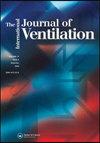室内环境质量和节能潜力的房间通风装置比较排气通风系统在法国
IF 1.5
4区 工程技术
Q3 CONSTRUCTION & BUILDING TECHNOLOGY
引用次数: 0
摘要
本文章由计算机程序翻译,如有差异,请以英文原文为准。
The indoor environmental quality and energy savings potential of room ventilation units compared to exhaust-only ventilation systems in France
Abstract Humidity-controlled mechanical exhaust ventilation (RH-MEV) has been widely used in France for over 35 years, demonstrating high durability and robustness. This exhaust-only ventilation strategy is widely used as an energy-saving measure, replacing constant mechanical exhaust ventilation (Constant-MEV) systems in residential buildings. It demonstrates energy savings due to the restricted airflows, but as a downside, the building’s indoor air quality (IAQ) often deteriorates. Moreover, it is impossible to recover heat with exhaust-only ventilation systems, which means that energy consumption for space heating is still quite significant and cold supply air temperatures are frequently introduced to the heated spaces. Room ventilation units (RVUs) with heat recovery represent an alternative ventilation solution allowing simple installation through the façade and providing fresh outdoor air and exhaust ventilation to each room. This study investigates these units’ energy saving potential and indoor environmental quality performance as an alternative solution to centralized exhaust-only ventilation systems. The dynamic simulations were performed for a reference residential building under various French climatic conditions for a heating season. The three ventilation strategies investigated were Constant-MEV, RH-MEV and room-based ventilation with RVUs. The results demonstrated 61–85% savings in space heating demand with the RVUs, compared to Constant-MEV under all climatic conditions. Compared to RH-MEV, the RVUs saved 44–75% energy for space heating while the CO2 concentration and relative humidity levels were decreased due to RVUs’ constant air exchange rate. In all cases, RVUs provided considerably higher supply air temperatures due to the implemented heat recovery, which can potentially improve indoor thermal comfort.
求助全文
通过发布文献求助,成功后即可免费获取论文全文。
去求助
来源期刊

International Journal of Ventilation
CONSTRUCTION & BUILDING TECHNOLOGY-ENERGY & FUELS
CiteScore
3.50
自引率
6.70%
发文量
7
审稿时长
>12 weeks
期刊介绍:
This is a peer reviewed journal aimed at providing the latest information on research and application.
Topics include:
• New ideas concerned with the development or application of ventilation;
• Validated case studies demonstrating the performance of ventilation strategies;
• Information on needs and solutions for specific building types including: offices, dwellings, schools, hospitals, parking garages, urban buildings and recreational buildings etc;
• Developments in numerical methods;
• Measurement techniques;
• Related issues in which the impact of ventilation plays an important role (e.g. the interaction of ventilation with air quality, health and comfort);
• Energy issues related to ventilation (e.g. low energy systems, ventilation heating and cooling loss);
• Driving forces (weather data, fan performance etc).
 求助内容:
求助内容: 应助结果提醒方式:
应助结果提醒方式:


